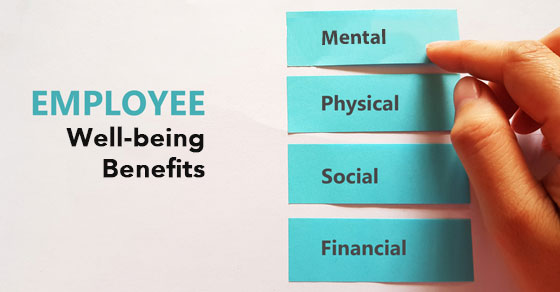
Employers: Is it Time to Upgrade Your “Well-Being” Benefits?
Various survey results have been rolling in, and the message for employers is relatively clear: Employees want support in maintaining their wellness — particularly when it comes to mental health.
Employers seem to be responding in kind. Many are ramping up their “well-being” benefits to retain valued staff members and draw strong job candidates. This marks a change in the competitive landscape for talent that every organization, including yours, should consider.
Lots of data
Among the most telling reports is MetLife’s Employee Benefit Trends Study 2024. The insurance giant combined responses from two surveys — one of 2,595 employee benefits decision-makers and influencers and another of 2,809 full-time employees — and found that 92% of employees want more “consistent care” from their employers.
This very high percentage echoes the results of the 2023 Workplace Wellness Survey by the Employee Benefit Research Institute and Greenwald Research. It found that, of 1,505 full- and part-time employees surveyed, 78% agreed that employers are responsible for ensuring staff members are “mentally healthy and emotionally well.”
As mentioned, many employers are actively trying to address these concerns. At the beginning of this year, the Integrated Benefits Institute, a nonprofit benefits research organization, released the results of a survey that found 51% of responding employers said “employee satisfaction” was their top organizational goal — that’s 10% more than the second most important goal of cost mitigation / revenue generation.
In response to this goal or a similar one, many employers are enhancing their employee benefits. The CHRO Confidence Index, which is researched and published by The Conference Board, a global nonprofit think tank and business membership organization, regularly takes the pulse of its member Chief Human Resources Officers (CHROs). In the February 2024 edition, 42% of responding CHROs reported planning to offer new benefits this year. Of those, 20% identified well-being benefits that will involve mental health initiatives.
Benefits to consider
So, what are well-being benefits? They’re generally considered those that augment an employer-sponsored health care plan and help support mental health as well as physical and financial wellness. Here are just a few to consider:
An Employee Assistance Program (EAP). This is a voluntary and confidential work-based intervention program designed to help employees and their dependent family members deal with issues that may be affecting their mental health and job performance. EAPs can help participants deal with issues such as workplace stress, grief, depression, marriage/family problems, psychological disorders, financial troubles, and alcohol and drug dependency.
Revised paid time off (PTO) policies. Many employers are finding that the old “X number of vacation days and X number of sick days” approach lacks the flexibility employees need to care for themselves. Your staff may appreciate a bank of PTO that can be used for any purpose, without question. Some employers are also adding “mental health days” to their lists of organizational holidays.
Trainings related to mental health or financial literacy. Employers are often well-positioned to teach groups of people to lessen behaviors that hurt mental health and emphasize behaviors that improve it.
For example, stress management programs can train workers to recognize strenuous situations and better cope with them. Meanwhile, financial literacy programs may help employees better understand topics such as debt management and investing. In turn, this can lower their stress levels.
A diverse menu
For many employers, particularly midsize and larger ones, the days of offering up some paid time off, health insurance and a retirement plan are over. Employees increasingly expect a wide and diverse menu of fringe benefits that address multiple facets of their lives. Contact us for help analyzing your benefits costs and choosing cost-effective offerings.
© 2024